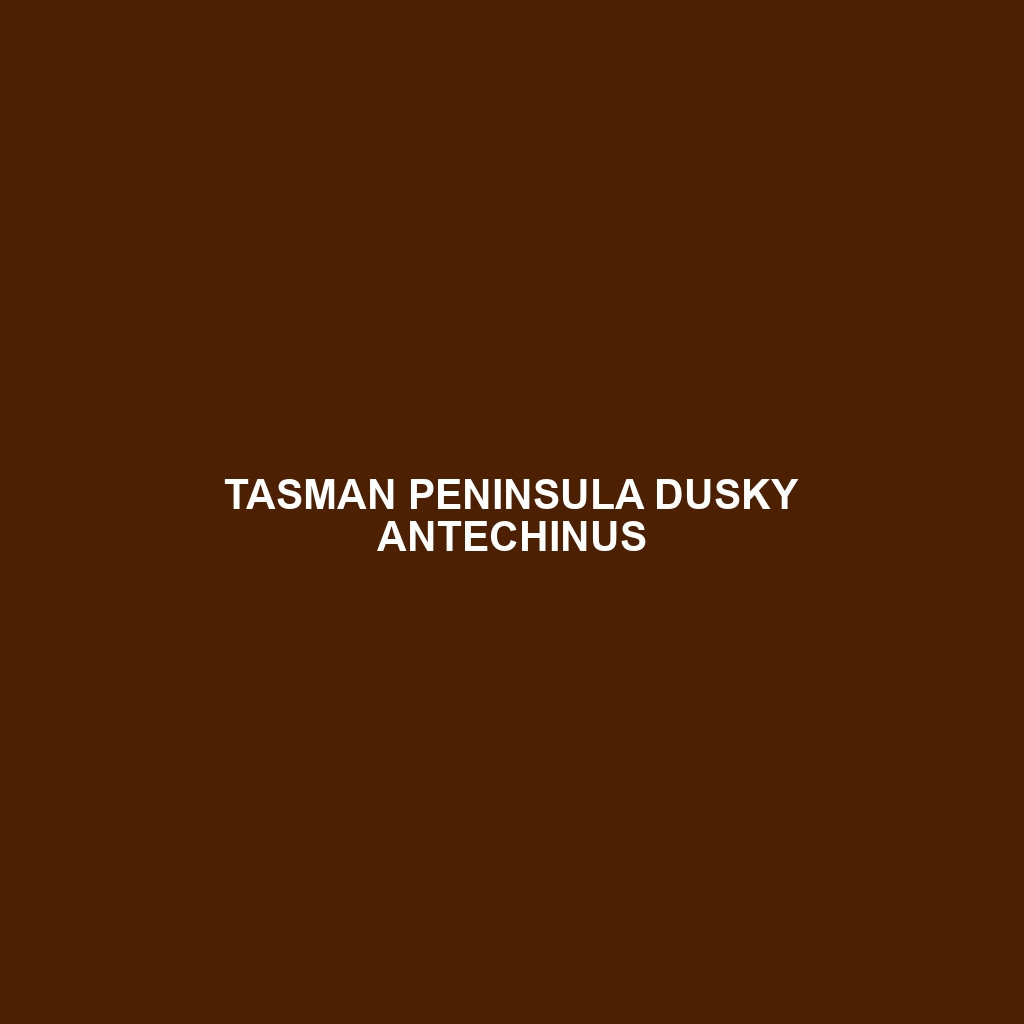Tasman Peninsula Dusky Antechinus: A Comprehensive Guide
The Tasman Peninsula Dusky Antechinus (Antechinus vandycki) is a small, carnivorous marsupial native to the Tasman Peninsula in Tasmania, Australia. Distinguished by its dusky fur and energetic demeanor, this unique species is known for its intense breeding season and remarkable adaptability to its environment. Despite its small size, the Tasman Peninsula Dusky Antechinus plays a significant role in the ecosystem as a predator of insects and small vertebrates.
Physical Characteristics
Size: The Tasman Peninsula Dusky Antechinus is relatively small, with adult males typically measuring about 12-15 cm (4.7-5.9 inches) in body length, and females slightly smaller, around 10-13 cm (3.9-5.1 inches). Their tails are almost equal to their body length, adding another 10-14 cm (3.9-5.5 inches).
Weight: These antechinuses weigh between 30-70 grams (1.1-2.5 ounces), with males generally being heavier than females.
Coloration: Their fur is primarily a dusky brown-gray on the back, blending into a lighter, almost cream-colored underside. This coloration provides excellent camouflage against the forest floor.
Special Features: They possess sharp, pointed teeth adapted for their carnivorous diet, and their large, rounded ears are highly sensitive to detect prey movements.
Behaviors
Social Interactions: Tasman Peninsula Dusky Antechinuses are generally solitary except during the breeding season. Males and females come together to mate, after which males typically die due to the extreme stress and physical exertion associated with mating.
Feeding Habits: As insectivorous predators, they primarily feed on insects, spiders, and occasionally small vertebrates. They are nocturnal hunters, relying on their keen sense of hearing and smell to locate prey.
Ecological Roles: By preying on insects and other small animals, they help control the population of these species, thus maintaining ecological balance in their habitat.
Habitat
Region: This species is endemic to the Tasman Peninsula in Tasmania, Australia.
Environment: They inhabit dense wet forests and woodlands, often with a thick understorey of shrubs and ferns. These environments provide ample cover and abundant food resources.
Shelter: They create nests in hollow logs, tree cavities, or dense vegetation, where they rest during the day.
Adaptations
Reproductive Strategy: The species is known for its ‘suicidal reproduction,’ where males expend all their energy during an intense breeding season, often resulting in their death post-mating. This ensures their genes are passed on while reducing competition for resources.
Camouflage: Their dusky coloration helps them blend into the forest floor, making them less visible to predators.
Nocturnal Lifestyle: Being nocturnal helps them avoid diurnal predators and exploit nighttime prey resources.
Conservation Status
Current Status: The Tasman Peninsula Dusky Antechinus is listed as endangered due to its limited range and the specific habitat requirements. Habitat loss and fragmentation are significant threats to their survival.
Conservation Efforts: Efforts include habitat protection and monitoring populations to ensure their numbers remain stable. Conservationists are also working on breeding programs to help increase their population.
Fun Facts
Unique Lifespan: Unlike many mammals, male Tasman Peninsula Dusky Antechinuses live for only about one year, dying shortly after their first breeding season due to an intense and stressful mating period.
Hyperactive Hunters: They have a high metabolic rate, requiring them to consume large amounts of food relative to their body size.
Diverse Diet: While they mainly eat insects, they are opportunistic feeders and will eat almost any small animal they can overpower.
By understanding the Tasman Peninsula Dusky Antechinus’s unique physical characteristics, behaviors, and ecological roles, we can better appreciate and protect this remarkable marsupial. Its survival depends on continued conservation efforts and habitat preservation.
